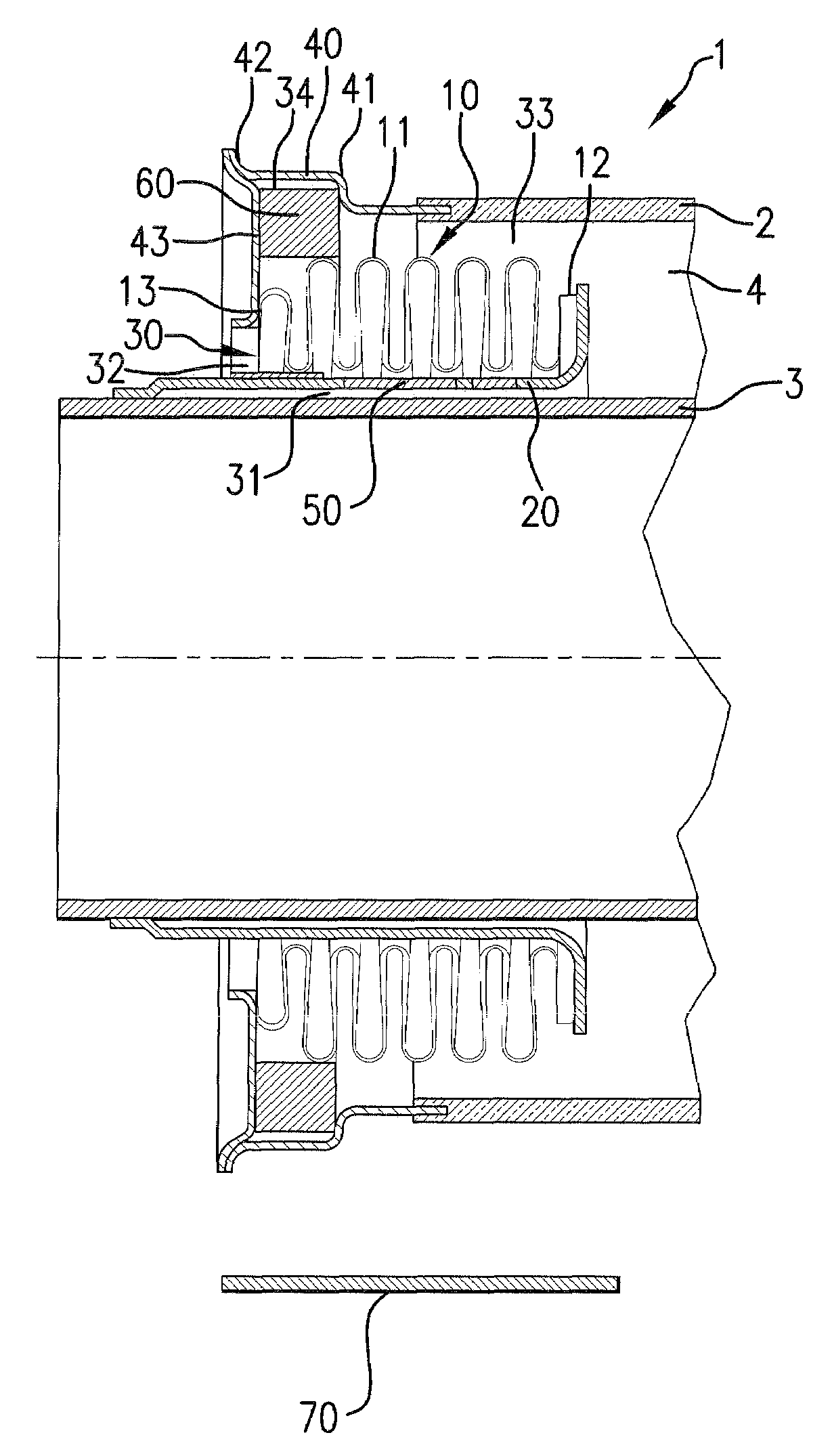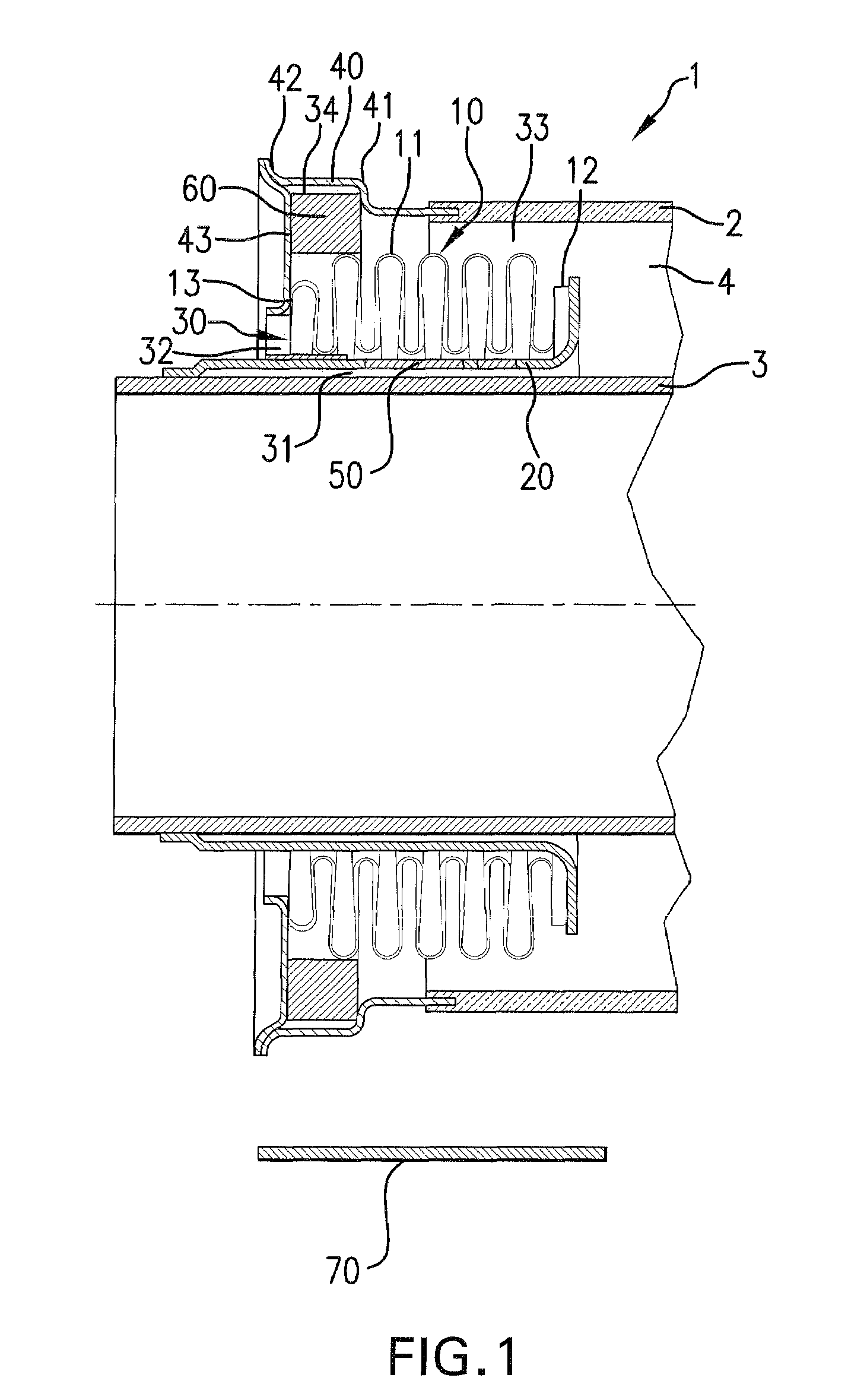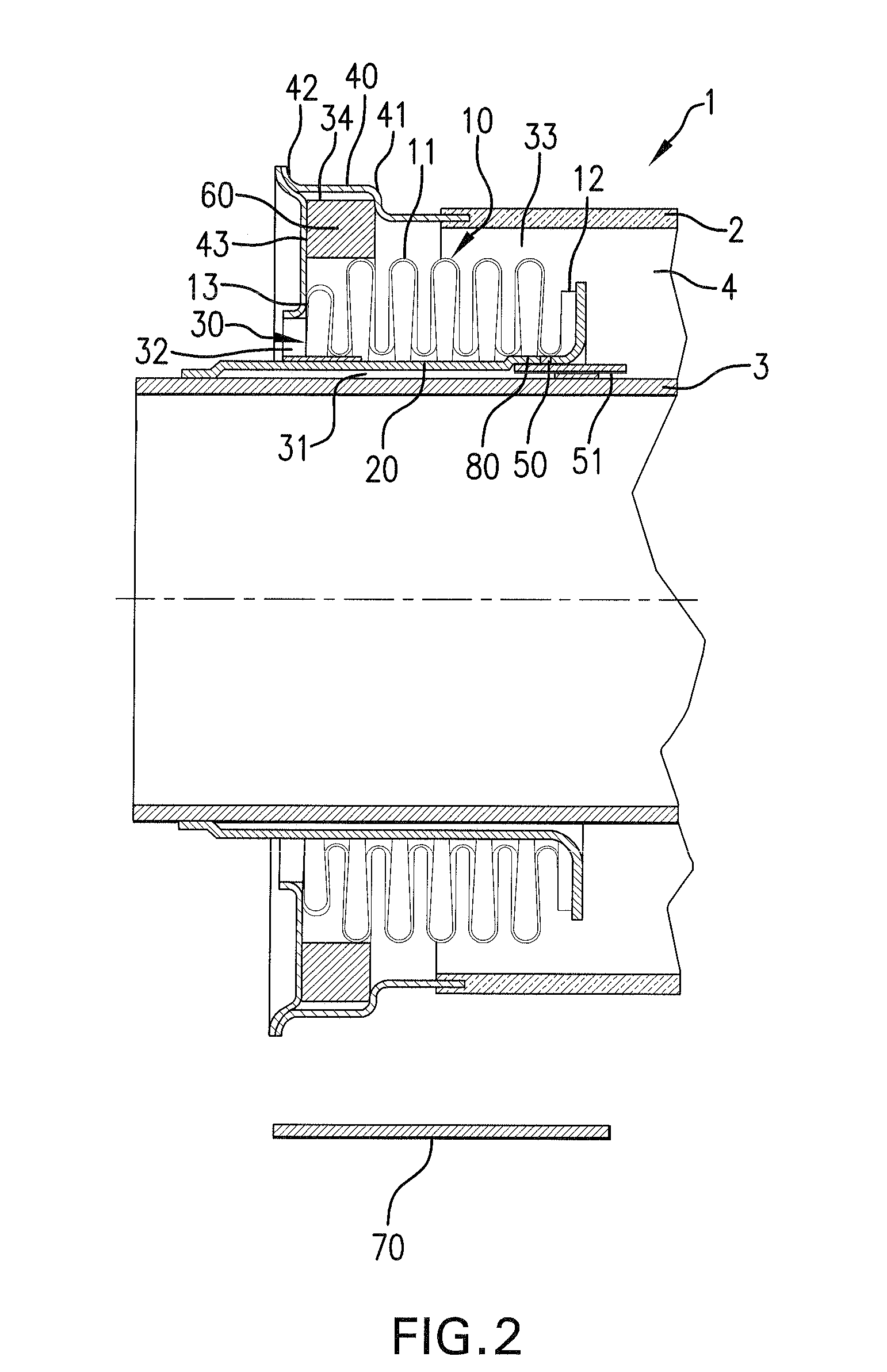Tubular radiation absorbing device for solar heating applications
a technology of tubular radiation and solar heating, which is applied in the direction of solar radiation concentration, solar heat collector mounting/support, solar heat collectors with working fluids, etc., can solve the problems of increased heat loss, undesirable pressure fluctuations, and reduction of the efficiency of tubular radiation absorbing devices, and achieves the effect of extending the service li
- Summary
- Abstract
- Description
- Claims
- Application Information
AI Technical Summary
Benefits of technology
Problems solved by technology
Method used
Image
Examples
Embodiment Construction
[0035]A longitudinal cross-sectional view through an end portion of the tubular radiation absorbing device 1 is shown in FIG. 1. The tubular radiation absorbing device 1 has a glass tubular jacket 2 and a central metal pipe 3 arranged concentrically in the glass tubular jacket 2. A radiation-selective coating for absorption of the solar radiation is preferably provided on the outside of the central metal pipe 3.
[0036]A glass-metal transitional element 40, which has a circumferential collar 42 pointing toward the outside, is welded with an annular disk 43.
[0037]An expansion compensating device 10 is provided for compensating the differing thermal expansion properties of the central metal pipe 3 and the glass tubular jacket 2. The expansion compensating device 10 comprises a folding bellows 11, which is arranged in a ring-shaped space 4 between the central tube 3 and the tubular jacket 2. The radially interior edge or end of the annular disk 43 is attached with the outer side of the e...
PUM
 Login to View More
Login to View More Abstract
Description
Claims
Application Information
 Login to View More
Login to View More - R&D
- Intellectual Property
- Life Sciences
- Materials
- Tech Scout
- Unparalleled Data Quality
- Higher Quality Content
- 60% Fewer Hallucinations
Browse by: Latest US Patents, China's latest patents, Technical Efficacy Thesaurus, Application Domain, Technology Topic, Popular Technical Reports.
© 2025 PatSnap. All rights reserved.Legal|Privacy policy|Modern Slavery Act Transparency Statement|Sitemap|About US| Contact US: help@patsnap.com



